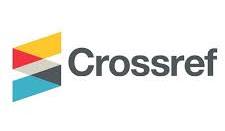ANALYSIS OF THE QUALITY OF MULTIPLE CHOICE QUESTIONS IN RELIGION AND MORAL EDUCATION FOR THIRD GRADE STUDENTS AT ADVENT NABIRE ELEMENTARY SCHOOL USING ITEMEN
DOI:
https://doi.org/10.24114/jmpsd.v2i6.67348Keywords:
Question Item Quality, Multiple Choice, Religion and Ethics, ITEMENAbstract
The purpose of this study was to analyze the quality of 20 multiple-choice questions in the second semester exam for the Religion and Ethics subject for third-grade students at SD Advent Nabire using the ITEMEN program. The analysis focused on the level of difficulty, discriminating power, and effectiveness of distractors. The results show that 65% of the questions are categorized as moderate and 35% as easy, with no difficult questions, indicating a lack of variety in challenges. The majority of questions (65%) have low to very low discriminating power, indicating their inability to distinguish students based on their level of understanding. However, 85% of the distractors function effectively, indicating a good distractor design. It was concluded that, although the distractors were good, the overall quality of the questions needed significant improvement in terms of discriminating power and difficulty level distribution in order to make the evaluation instrument more valid. Recommendations included revising problematic questions, increasing teachers' capacity in question writing, and developing a high-quality question bank.References
Arikunto, S. (2019). Dasar-Dasar Evaluasi Pendidikan. Bumi Aksara.
Azwar, Saifuddin. (2016). Dasar-Dasar Psikometri. Yogyakarta: Pustaka Pelajar.
Anastasi, A., & Urbina, S. (1997). Psychological Testing (7th ed.). Prentice Hall.
Crocker, L., & Algina, J. (1986). Introduction to Classical and Modern Test Theory. Holt, Rinehart and Winston.
Depdikbud. (1985). Petunjuk Penulisan Butir Soal Tes. Jakarta: Departemen
Pendidikan dan Kebudayaan
Hambleton, R. K., Swaminathan, H., & Rogers, H. J. (1991). Fundamentals of Item
Response Theory. Sage Publications.
Kementerian Pendidikan, Kebudayaan, Riset, dan Teknologi. (2022). Keputusan
Menteri Pendidikan, Kebudayaan, Riset, dan Teknologi Republik Indonesia
Nomor 56/M/2022 tentang Pedoman Penerapan Kurikulum dalam Rangka
Pemulihan Pembelajaran. Jakarta: Kementerian Pendidikan, Kebudayaan,
Riset, dan Teknologi.
Mardapi, D. (2012). Pengukuran, Penilaian, dan Evaluasi Pendidikan. Nuha Medika.
Nitko, A. J., & Brookhart, S. M. (2022). Educational Assessment of Students (8th ed.).
Pearson.
Popham, W. J. (2005). Classroom Assessment: What Teachers Need to Know (4th
ed.). Pearson Education.
Retnawati, H. (2016). Analisis Kuantitatif Instrumen Penelitian. Parama Publishing.
Sudijono, Anas. (2011). Pengantar Evaluasi Pendidikan. Jakarta: Raja Grafindo
Persada.
Suharsimi. (2013). Dasar-Dasar Evaluasi Pendidikan. Jakarta: Bumi Aksara.
Sugiyono. (2017). Metode Penelitian Kuantitatif, Kualitatif, dan R&D. Bandung:
Alfabeta.
Sudijono, A. (2017). Pengantar Evaluasi Pendidikan. PT Raja Grafindo Persada.
Downloads
Published
How to Cite
Issue
Section
License
Copyright (c) 2025 Efa Nurlinda Purba, Hermenius Sujati

This work is licensed under a Creative Commons Attribution-ShareAlike 4.0 International License.









.png)



